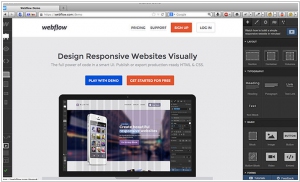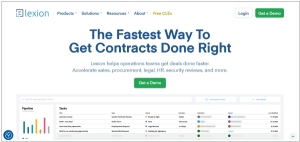Bubble vs Webflow
July 27, 2023 | Author: Michael Stromann
Bubble and Webflow are two popular no-code web development platforms that allow users to create websites and web applications without traditional coding. Bubble focuses on building dynamic web applications with a drag-and-drop visual interface and a robust backend workflow system. It empowers users to create complex and data-driven applications that can integrate with external APIs and databases. On the other hand, Webflow is known for its responsive web design capabilities, enabling users to build visually appealing and responsive websites using a visual canvas. While both platforms cater to different aspects of web development, Bubble is more suited for creating interactive and database-driven web applications, while Webflow excels in designing static and dynamic websites with a strong emphasis on aesthetics and responsiveness.
See also: Top 10 Low-Code Platforms
See also: Top 10 Low-Code Platforms
Bubble vs Webflow in our news:
2024. Webflow acquires Intellimize to add AI-powered webpage personalization

Webflow, a platform for web design and hosting, has recently acquired Intellimize, a startup utilizing AI to tailor websites for individual visitors, although the exact terms of the acquisition remain undisclosed. Sources suggest the purchase price falls within the "eight-figure" range. This acquisition aligns seamlessly with Webflow's objectives as it addresses the common need among its customers for personalized and optimized websites. Intellimize's approach involves AI-driven page generation and continuous adjustments based on user behavior and origin. By employing Intellimize's technology, companies can create website templates, allowing the AI to conduct experiments and refine content for optimal performance before presenting it to visitors.
2021. Website builder Webflow raises $140M
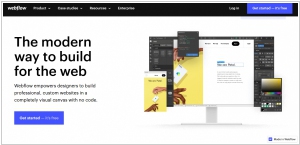
Webflow, a software company specializing in empowering businesses to create no-code websites, has announced the successful completion of a $140 million Series B funding round. Webflow's product falls under the category of companies advocating for the idea that software development for the internet should become easier, not more challenging, as time progresses. With ambitious plans ahead, the company aims to enhance its services to enable the creation of richer and more robust websites. According to the CEO, websites are an integral part of the software landscape, and he envisions no-code tools gradually assuming more complex software tasks. This expansion could foster the growth of the broader no-code market, potentially paving the way for startups to develop services that allow non-developers to rely less on engineering teams as time goes on.
2017. Webflow releases Interactions 2.0
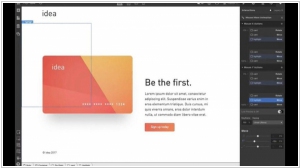
Webflow, a fusion of WordPress and Photoshop for web design, has unveiled Interactions 2.0, a significant enhancement to its web design platform that empowers designers to create professional websites without the need for coding. With the introduction of IX2.0, designers using Webflow can now effortlessly develop website interactions visually within minutes, a process that would typically take experienced developers hours or even days. Web professionals seeking to craft innovative web experiences can take advantage of Webflow IX2.0, a cutting-edge website animation tool that enables them to construct intricate timeline-based animations, captivating mouse-based effects, and captivating scrolling (parallax) effects, all without writing a single line of code. Unlike Adobe products, Webflow's revolutionary IX2.0 feature empowers designers with robust new capabilities for designing exceptional web experiences that were previously only achievable through coding.
2015. Webflow launched Visual CMS
Content management system provider Webflow has introduced what it proudly calls the "world's first visual CMS." This innovative solution enables users to create websites with dynamic content, images, and blog posts without the requirement of assembling a design and code team. With a user-friendly interface, it offers a streamlined experience for individuals or small teams who wish to design their own websites. Notably, Webflow emphasizes that it eliminates the need to tinker with HTML, CSS, or PHP. While Webflow stands out in the web design space, other companies like Wordpress.com have also recently revamped their interfaces to enhance appeal, especially when compared to popular blogging platforms like Medium. Platforms such as Squarespace and Weebly target sole proprietors or small businesses seeking a web presence without the resources or budget for an entire team. While a basic plan is available for free, users can opt for a $16 monthly option that includes web hosting and unlimited code support.
2014. Webflow raised $1.5 Million
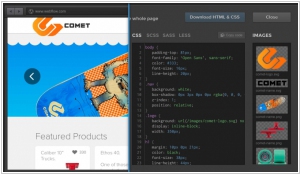
Webflow, a startup that focuses on simplifying the process of visually designing and hosting responsive websites for creative professionals, has successfully secured $1.5 million in seed funding. With Webflow, designers can utilize a drag-and-drop website builder featuring an intuitive interface to easily customize their sites with various common web elements such as sliders, maps, buttons, divs, videos, social widgets, and more. Underneath the surface, Webflow generates HTML5 and CSS3 code that complies with the W3C standards. While there are a few competing services in this space, such as Bootstrap, Foundation, or Adobe's Edge Reflow, they often require a more advanced skill set to utilize effectively.


